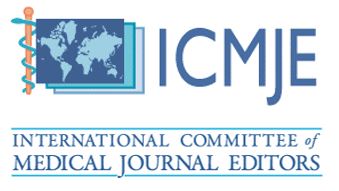Long Cervicothoracolumbal Rigid Bracing Stabilization on Incomplete Spinal Cord Injury of Post-Operated Multi-Focal Upper Cervical-Thoracic Spinal Tuberculosis: A Unique Case Report
DOI:
https://doi.org/10.51200/bjms.vi1.3744Keywords:
spinal cord injury, tuberculous spondylitis, rehabilitationAbstract
Background and aim: Spinal tuberculosis (STB) is a hazardous type of bone tuberculosis that could affect the entire spine, with predilection towards the lower thoracic level. Upper cervical spondylitis occurred only at 0.3 – 1% of all STB cases, but this rare type leads to severe consequences, including tetraplegia, autonomic dysfunction, and respiratory impairment. This case reported long CTLSO rigid external stabilisation reasoning to boost protection whilst recovering tuberculosis despite stable internal stabilisation. Methods: A 34-year-old male came with one year of worsening low-back pain, unintentional weight loss, and gradual loss of power and sensation of both feet within a month. Physical examination showed kyphotic deformity, tenderness, key-muscle-strength 3, and sensory impairment for lower extremities, with no autonomic disturbances. Laboratory works showed chronic ongoing infection. Whole-spine MRI showed multiple spondylodiscitis with multi-focal paravertebral abscesses at C3 – C5, C7 – T3, T9 – T12, L1, severe canal stenosis and anterior segment destruction of T12. Results: The patient was diagnosed with SCI AIS D with a neurological level of L3 secondary to T12 vertebra destruction from STB. He underwent abscess evacuation, debridement, and posterior stabilisation at T10 – L3 and debridement of abscess at C3 – C5 without the need for stabilisation. After procedures, the spine was further stabilised by a CTSLO brace with flexion, extension, lateral flexion, rotation stop. Inward rehabilitation includes incremental mobilisation, upper-limb-extensor-group-strengthening-programme, balance-exercise with ambulation training. Patient discharged with status: ambulate independently with a walker. To date, the patient has returned to work with independent ambulation. Conclusion: Type-III STB was indicated for surgical procedures. Instability of upper cervical prevented patient to performed loadbearing activity thus lowering patient functional outcomes. CTLSO supplementation was given to compensate for 3 lesion sites, the upper cervical, mid-thoracic, and lower-thoracic. For the C3 – C5 lesion, there was no internal stabilisation, so a proper external mode of stabilisation should be given. However, for the thoracic level, CTLSO was given due to (1) incomplete SCI lesion in the absence of deteriorating neurological deficit,c(2) porous nature of STB, and (3) good prognostic recovery of STB with anti-TB medication leading to the reversible neurological deficit.
Downloads
Published
How to Cite
Issue
Section
License
All articles are published under the Creative Commons Attribution-NonCommercial (CC BY-NC 4.0) license, enabling users to read, download, copy, distribute, and adapt the material for non-commercial purposes, provided proper credit is given to the original authors and the source. This model supports transparency, accessibility, and the global exchange of medical knowledge.








1.png)



